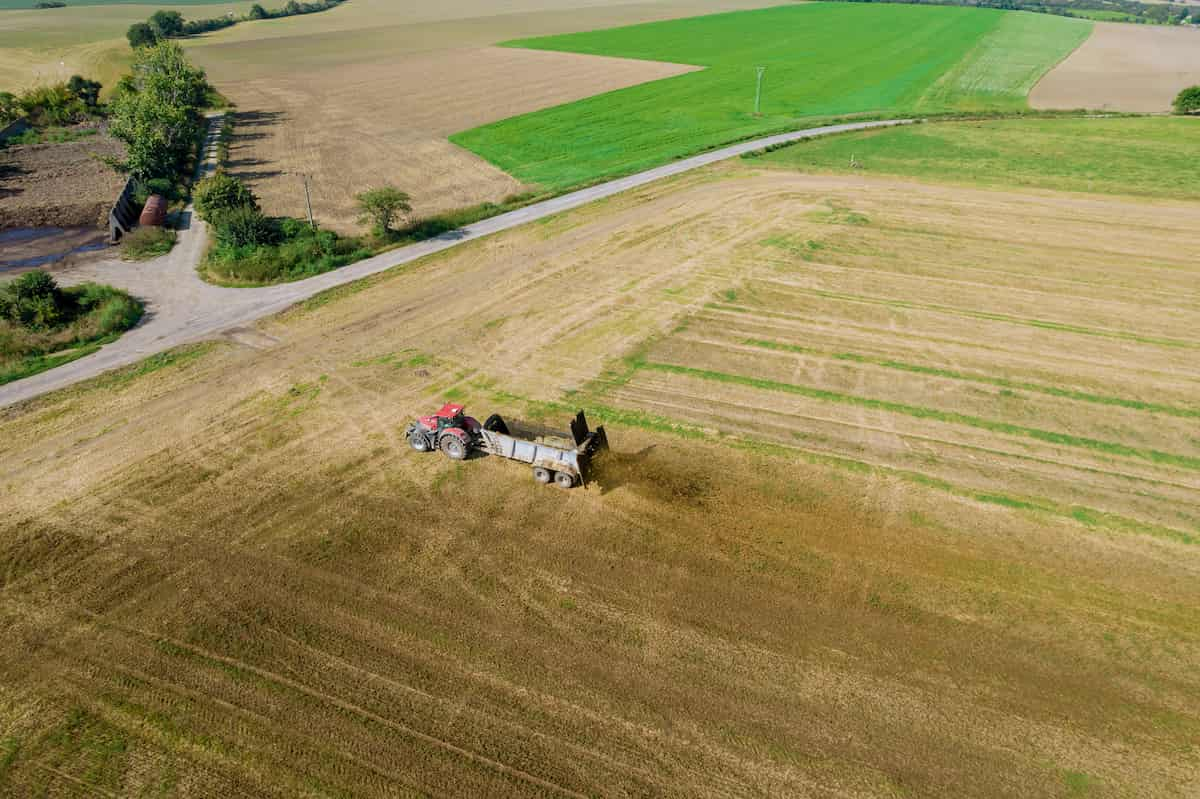Healthy soil is essential for productive and sustainable agriculture. However, conventional tillage practices, such as plowing and disking, can damage soil structure, reduce organic matter content, and contribute to erosion and nutrient loss. No-Till farming is a method of farming that can help promote soil health by minimizing soil disturbance and maintaining organic matter.

In fact, studies show that No-Till farming can increase soil organic matter by up to 30%, improving soil structure, water-holding capacity, and nutrient availability for crops. By implementing No-Till practices, farmers can improve soil health and productivity while reducing the environmental impacts of agriculture.
How to Bring Soil Health to Life
What is No-Till Farming?
No-till farming is a farming method that involves raising crops without tillage, which disturbs the soil. Using this technique, soil erosion can be reduced, water infiltration can be increased, and soil retention of organic matter and nutrient cycling can be encouraged. Additionally, it may boost the soil’s variety and quantity of life. The three fundamental techniques for no-till farming are “sod seeding,” “direct seeding,” and “surface seeding.”
Herbicides may be used in traditional no-till systems to manage weeds, although organic systems employ a variety of techniques, such as mulching weeds with cover crops. No-till techniques might be effective in some situations, even if tillage is still the most common technique in agriculture. Some methods may combine no-till techniques with shallow cultivation or strip tillage.
Benefits of No-Till
- Improved soil structure: No-till practices allow for the development of soil aggregates, which help to improve soil structure, reduce soil compaction, and increase water infiltration.
- Water conservation: No-till farming helps conserve water by reducing soil evaporation and increasing water infiltration, leading to increased water availability for crops.
- Reduced erosion: By leaving crop residues on the soil surface, no-till farming helps to reduce soil erosion, particularly on sloping terrain and in areas with high rainfall.
- Increased organic matter: No-till practices promote the accumulation of organic matter in the soil, improving soil fertility, nutrient availability, and water-holding capacity.
- Cost savings: No-till farming can reduce the need for tillage equipment, fuel, and labor, resulting in cost savings for farmers.
Principles to Soil Health
- Minimize soil disturbance: Reducing tillage and mechanical disturbance can improve soil health by preserving soil structure, organic matter, and beneficial microorganisms.
- Keep the soil covered: Covering the soil with living or dead plant materials such as cover crops, mulch, or crop residue can protect soil from erosion, evaporation, and temperature fluctuations.
- Use crop diversity: Planting diverse crop species can help maintain a healthy soil microbiome, reduce pest and disease pressure, and improve soil nutrient cycling.
- Manage inputs wisely: Careful management of information such as fertilizers, pesticides, and irrigation can help minimize negative impacts on soil health while promoting plant growth and yield.
- Maintain living roots: Keeping living roots in the soil as long as possible through cover cropping or other practices can stimulate soil microbiota activity, sequester carbon, and improve soil structure.
In case you missed it: Frequently Asked Questions About Soil Health

Key Practices for Successful No-Till Farming
- Absence or minimal tillage: To create furrows, quickly plant seeds, firm them in place, and cover the soil, no-till farming requires specialized equipment (disc seeders or agriculture drills). The earth is minimally disturbed as the hole is excavated precisely where the seed is expected to fall.
- Cover with straw: Agriculturalists use mulches, straw, or dry hay to cover the spaces between the rows to reduce weeds. Lack of light aids in weed suppression but also gathers moisture and shields plant roots from the sun.
- Crop rotation: Crop rotation is an effective farming technique that helps with weed and pest invasions because different crops present different pest and weed threats, soil erosion because different plants have different roots, and soil fertility because legumes can release nitrogen into the soil.
- Use of technology: Crop Monitoring is an online tool for agriculture that makes no-till farming decisions and implementation easier. It enables thorough five-year and real-time monitoring and analysis of vegetation conditions. Farmers can select the best crop based on the unique climatic requirements of each plant by retrieving meteorological information and information on vegetation indices.
Effects of No-Till Farming on Soil
- Reduce Erosion: Tillage breaks the soil’s surface, making it vulnerable to erosion due to wind and water. No-till farming eliminates this issue by avoiding soil disturbance.
- Carbon Sequestration: No-till farming is important for carbon sequestration, as it keeps the carbon in the ground, reducing carbon dioxide in the atmosphere.
- Conserves Soil Fertility: Tilling interferes with the soil’s flora and fauna balance and impacts micro-communities, while no-till farming preserves soil fertility. Soil microorganisms can improve soil quality naturally, and legumes can enrich nitrogen levels in the soil.
Challenges and Solutions for No-Till Farming
- Weed Control: Weeds can be challenging in no-till farming as herbicides can damage crops. However, planting cover crops, using crop rotation, and using high-residue cultivators can help manage weeds.
- Soil Compaction: No-till farming can lead to soil compaction, reducing water infiltration and root growth. Solutions include using cover crops, reducing traffic on the field, and using deep-rooted crops.
- Crop Residue Management: Excessive crop residue can cause problems with planting and harvesting. Solutions include using specialized equipment, tilling narrow strips for planting, and using cover crops to help manage residue.
- Disease and Pest Control: No-till farming can lead to increased disease and pest problems. Solutions include crop rotation, resistant crop varieties, and cover crops to help break pest and disease cycles.
- Equipment and Maintenance: No-till farming requires specialized equipment that can be expensive and requires proper maintenance. Solutions include using or renting equipment, investing in proper care, and sharing equipment with other farmers.
In case you missed it: Frequently Asked Questions About Soilless Farming (Hydroponics)

Conclusion
Adopting no-till farming practices is an effective way to improve soil and promote sustainable agriculture. No-till farming can enhance soil productivity, water retention, and nutrient cycling by minimizing soil disturbance, increasing organic matter, and preserving soil structure while reducing erosion and greenhouse gas emissions.
- Feed Your Flock for Less: Top 10 Tips to Save on Chicken Feed
- Ultimate Guide to Ossabaw Island Hog: Breeding, Raising, Diet, and Care
- Hatching Answers: The Top 10 Reasons Your Chickens Aren’t Laying Eggs
- Eggs and Economics: Breaking Down the Cost of Raising Backyard Chickens
- Defend Your Greens: Proven Methods to Keep Iguanas Out of Your Garden
- Ultimate Guide to Cinnamon Queen Chicken: A Comprehensive Guide for Beginners
- Ultimate Guide to California Tan Chicken: Breeding, Raising, Diet, Egg-Production and Care
- Ultimate Guide to Marsh Daisy Chicken: Breeding, Raising, Diet, and Care
- 10 Types of Chicken Farming Businesses You Can Start for Profits